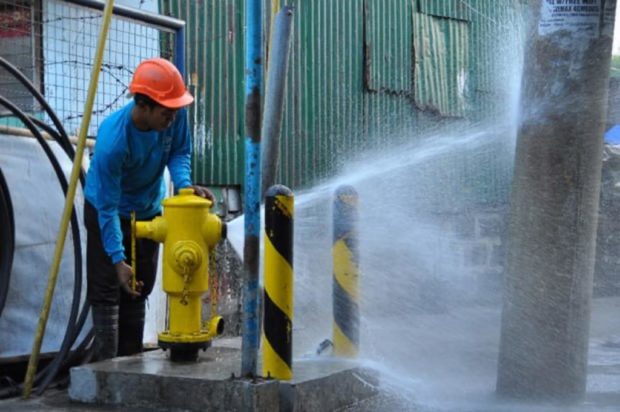
A Manila Water personnel tests the water pressure of a fire hydrant in Metro Manila area. This is just one of the 3,368 Manila Water hydrants in the East Zone of Metro Manila and Rizal. The hydrants are subjected to an annual three-way test to ensure operability especially during summer.
MANILA, Philippines — As the summer months are fast approaching, the Manila Water, through its partnership with the Bureau of Fire Protection (BFP), is actively taking measures to quell damages to property and even the loss of lives brought by fire emergencies.
Currently, the water concessionaire has checked and maintained its 3,368 fire hydrants strategically placed in the East Zone of Metro Manila and parts of Rizal. Because of its size and population, Quezon City Service Area (SA) was allocated the most Manila Water hydrants, with 916. This is followed by Makati-Mandaluyong SA with 834, Taguig SA with 522, Marikina SA with 414, Taguig SA with 394, and Rizal SA with 288.
To maximize efficiency, each hydrant in a commercial space is designated a 350-meter service radius while one in a residential area is given a 250-meter service radius. This installation and spacing convention between hydrants comply to Republic Act No. 9514 or the Fire Code of the Philippines.
Through a partnership with BFP and a memorandum of agreement, the water company provided the BFP and barangay officials in the East Zone and parts of Rizal keys to the hydrants. Part of the agreement is the joint protection and maintenance of the hydrants by all parties.
“Fire hydrants are very crucial in preventing further damages to property, injuries, and even loss of lives. That’s why we make it a point that these hydrants are serviced annually before the summer months. We would also like to remind our customers and LGUs to make sure that the hydrants are unobstructed so our firefighters can access them quickly during emergencies,” Manila Water Corporate Communications Affairs Group Director Jeric Sevilla said.
The wet barrel hydrants, though built to endure the harshest weather, still undergo an annual three-way test to ensure operability during fire emergencies. This involves testing the water quality and pressure, flushing, and even new paintjobs to protect them further from the elements.
RELATED STORY:
Manila Water meets regulatory standard, customer demand for 24/7 water supply